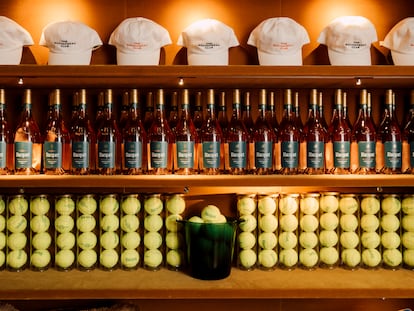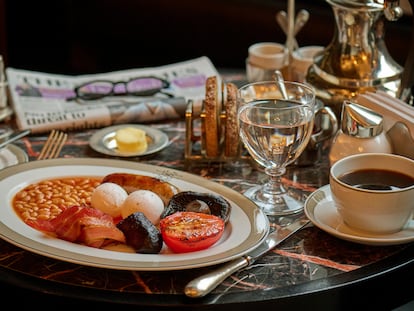Revival of the ‘bouillons’: the cheap, noisy eateries triumphing in inflation-ridden Paris
The French capital experienced a boom in these establishments in the 19th century. After being on the verge of extinction, they have recently made a comeback, thanks to their traditional food and affordable prices

The formula is infallible: affordable prices (something rare in Paris), decent food and vintage furniture. And very fast service. The soup? €1. The stew? €1.50. The caramelized cream? €3.20. You can get a whole meal for the equivalent of $10. In a city where eating for less than €20 ($22) is increasingly becoming a pipe dream, the new gastronomic fever is bouillons. A bouillon is a broth, while bouillons are restaurants that have their origins in the 19th century, serving, in addition to broth, typical French dishes.
Today, with inflation that has driven many customers away from brasseries and bistros, Paris is experiencing bouillon fever. There are lines of a hundred or more people waiting outside to get in: patrons sometimes wait for over an hour. Tourists, locals, families, and students crowd inside.
Up until 2017, both on the left bank and right bank of the Seine river, the bouillons were in decline. In that year, there was only one left: the sole survivor of the 19th-century bouillons. But now there are 10 according to a count by the newspaper Le Parisien. And they’re expanding to other French cities.
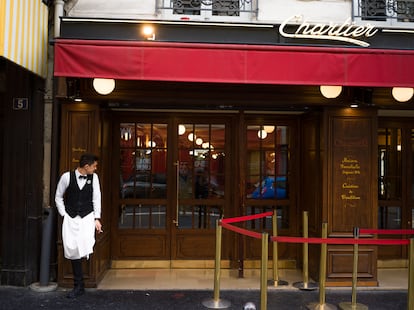
The secret? “People want more than just a dish. They want decor, a good atmosphere,” says Yann Hulin, the operations director of Bouillon Chartier, which is the oldest bouillon, having survived the centuries. It has inspired many other recently opened establishments. “It’s not expensive,” Hulin notes. “Now, because it’s not expensive, does that mean it isn’t good? No!”
We’re in the Bouillon Chartier, at 7 Rue du Faubourg, Montmartre, in the lively area of the Grand Boulevards. It’s 6 p.m. on a Wednesday. We sit among the comings and goings of the waiters and the bustle of the diners, an authentic ballet and symphony.
Little has changed since 1896, when the Chartier brothers opened the restaurant. The wood is well-worn; the paper napkins are used by the waiters to write down orders and total the bills. You can see the numbered lockers where, in the past, the regulars — blue and white-collar workers — would keep their tablecloths.
Hulin, a man with decades of experience in the sector, explains that, in over a century, the restaurant has gone through several owners (and, he might have added, survived two world wars, a foreign occupation, three republics and 18 presidents), but has never “changed the decor, the way of operating, or the affordable pricing.”
“The paper menu, which we print every day, with the date at the top, is the same,” he continues, before listing the key dishes (without forgetting the prices): “We can offer you a menu for €10 ($11): a starter, the main course and dessert.”
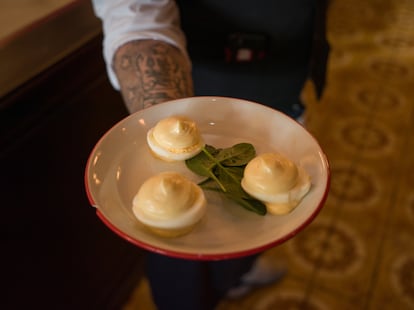
Chartier — currently with three locations — is integrated into the Joulie Group. The key to the success of these restaurants (and their imitators) is “the quality-to-price ratio,” according to those who manage several bouillons. Nearly 2,000 covers per day allow for restaurateurs to negotiate favorable prices with suppliers. The fast pace also helps. You sit down and, without realizing it, you’re eating. In 50 minutes, or just over an hour, the client has already gotten up and left the table free for the next diner. Considering that the bouillons are open from noon until midnight, there’s a lot of turnover.
Historian Loïc Bienassis, of the European Institute of Food History and Cultures in Tours, explains the success of bouillons with “the success of the word.” Bouillon “conveys an entire nostalgic [imagination].” The mere mention of the word recalls another era. And there’s another key, according to Bienassis: “the success of the concept.” The concept is “bourgeois and traditional cuisine — a bit bistro-like, with good value for money — in the center of the city and in fairly large spaces that [tap into] nostalgia.”
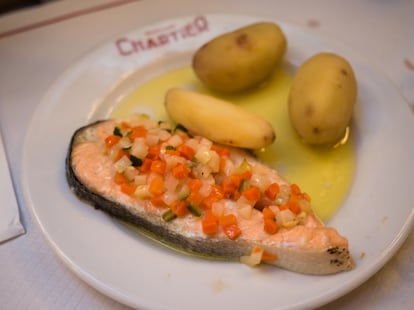
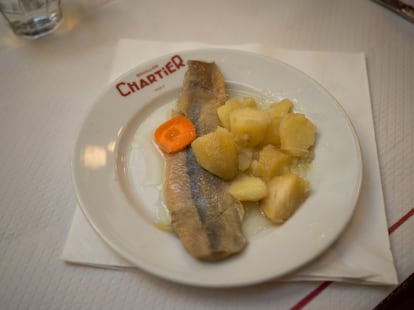
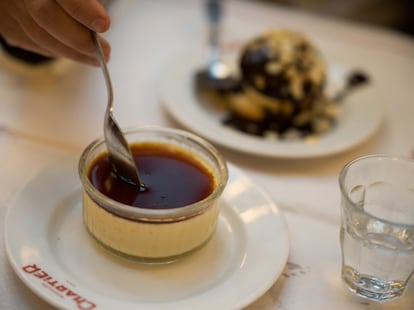
Bienassis places the origin of bouillons in the mid-19th century, when a certain Baptiste-Adolphe Duval opened the first one on Rue Montesquieu. Like the bouillons of today — which run like a Swiss watch and are authentic factories of quick and popular food — Duval invented a rational and efficient system. Many others imitated it and, by the end of the century, there were about 200 in Paris.
Of these, however, only Chartier survived. Why? “Chance,” the historian shrugs. Chartier kept the flame burning throughout the 20th century. If it had disappeared, the bouillons would surely have been forgotten. “It allowed for the survival of the word and the imagination.”
I remember Bouillon Chartier from the 1980s. The numbered lockers, the hubbub and the crowd, the waiters in uniform. It was a typical and unique place. When I returned three decades later, the feeling was strange. Nothing had apparently changed… but you had to wait in line to get in and there were several tourists among the clientele. There was also a merchandise shop.
A few days ago, when I lunched there again with photographer Samuel Aranda, everything was the same: from the old menu to the waiter, who knew how to put on a show.
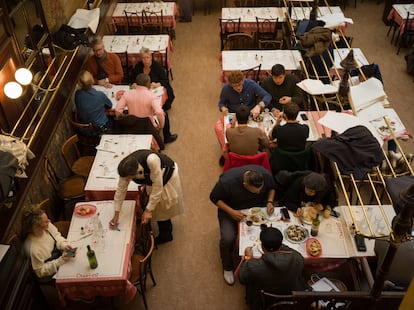
“Let’s start at the end!” our waiter exclaimed. He was a man with a southern French accent, who made a mistake and brought us profiteroles (which were meant for another table) instead of the starters.
And the food? It must be acknowledged that one does not go to a bouillon to sample haute cuisine. Samuel, who was eating at Bouillon Chartier for the first time, found a precise phrase to describe the hearty fare: “Proudly decadent.”
That’s the main difference between this bouillon and the new ones, where the aged flavor is missing. One recent night, at the Bouillon République, which belongs to the same group as the Bouillon Pigalle, a hundred people were waiting outside. However, as there were three of us in our party, we were able to get through after only 20 minutes in line. Inside, the atmosphere was electric. There were entire tables of students shouting and singing. “It looks like a school cafeteria,” someone commented. “Or a beer festival,” added another of my companions.
Paul Moussié, restaurant manager, explains that the average time for each meal in this restaurant is, at midday, 50 minutes. At night, it perhaps extends to one hour and 10 minutes or one hour and 20 minutes. “To make a profit, we need [constant turnover].”
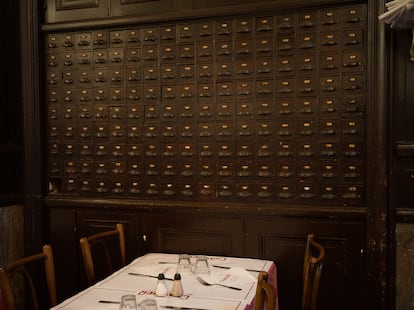
At Bouillon République, everything is more modern and shiny than at Chartier. There are several languages on the menu. The waiter writes down the order on a screen. You can pay with your phone. When you finish your meal and leave, you see that there are still tons of people stuck in line. I was reminded of the quote from Yogi Berra, the famous baseball player and coach, known for his absurd aphorisms. Talking about a restaurant, he once said: “Nobody goes there anymore. It’s too crowded.”
Could it be that the long wait to get inside is a deterrent to customers? Or is it a point of pride? “For us, it’s more of an advantage,” Moussié chuckles.
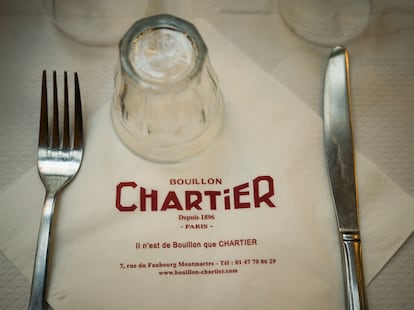
Sign up for our weekly newsletter to get more English-language news coverage from EL PAÍS USA Edition
Tu suscripción se está usando en otro dispositivo
¿Quieres añadir otro usuario a tu suscripción?
Si continúas leyendo en este dispositivo, no se podrá leer en el otro.
FlechaTu suscripción se está usando en otro dispositivo y solo puedes acceder a EL PAÍS desde un dispositivo a la vez.
Si quieres compartir tu cuenta, cambia tu suscripción a la modalidad Premium, así podrás añadir otro usuario. Cada uno accederá con su propia cuenta de email, lo que os permitirá personalizar vuestra experiencia en EL PAÍS.
¿Tienes una suscripción de empresa? Accede aquí para contratar más cuentas.
En el caso de no saber quién está usando tu cuenta, te recomendamos cambiar tu contraseña aquí.
Si decides continuar compartiendo tu cuenta, este mensaje se mostrará en tu dispositivo y en el de la otra persona que está usando tu cuenta de forma indefinida, afectando a tu experiencia de lectura. Puedes consultar aquí los términos y condiciones de la suscripción digital.
More information
Archived In
Últimas noticias
Welcome to the post-religion era: The idea of Christianity as the absolute truth has become obsolete
‘I thought you would like it’: The risky sexual practice popularized by TV shows and TikTok
The digitalization of tourism: ‘They promise experiences and gave us the worst possible one’
Mexican peso defies uncertainty with forecasts of a new period of stability in 2026
Most viewed
- Sinaloa Cartel war is taking its toll on Los Chapitos
- Oona Chaplin: ‘I told James Cameron that I was living in a treehouse and starting a permaculture project with a friend’
- Reinhard Genzel, Nobel laureate in physics: ‘One-minute videos will never give you the truth’
- Why the price of coffee has skyrocketed: from Brazilian plantations to specialty coffee houses
- Silver prices are going crazy: This is what’s fueling the rally

